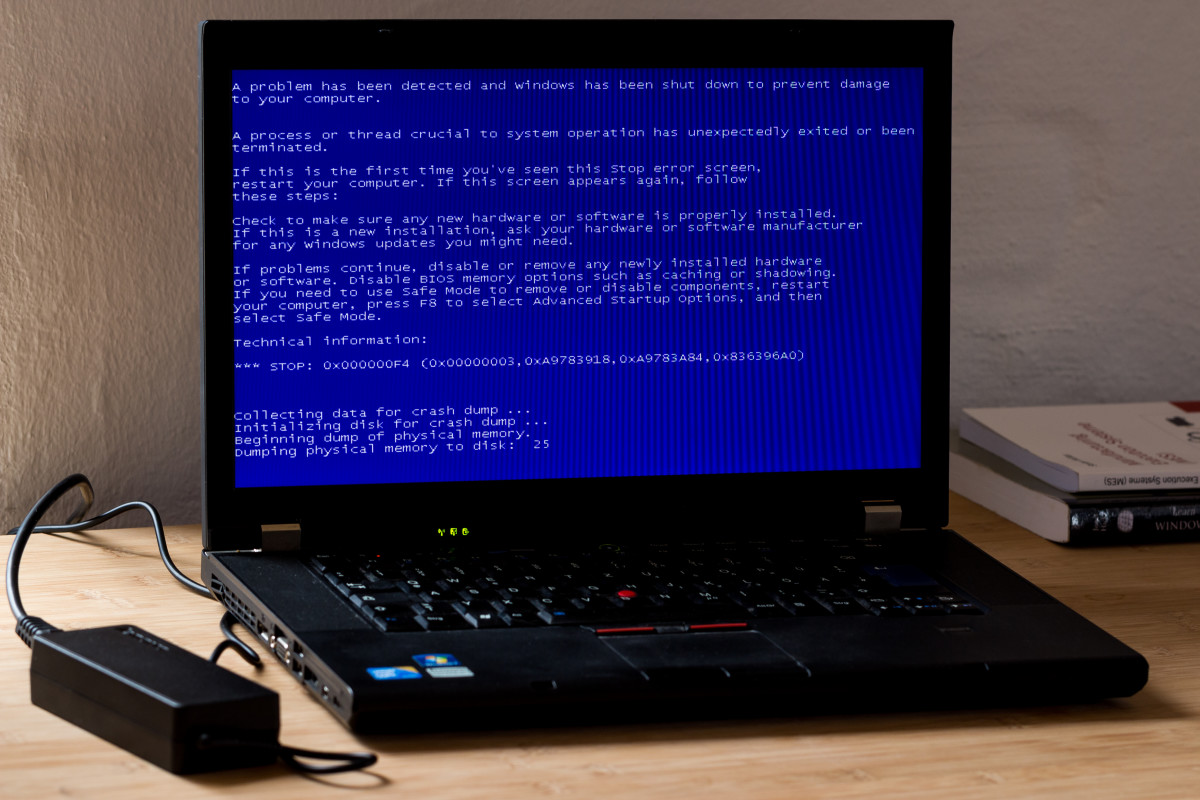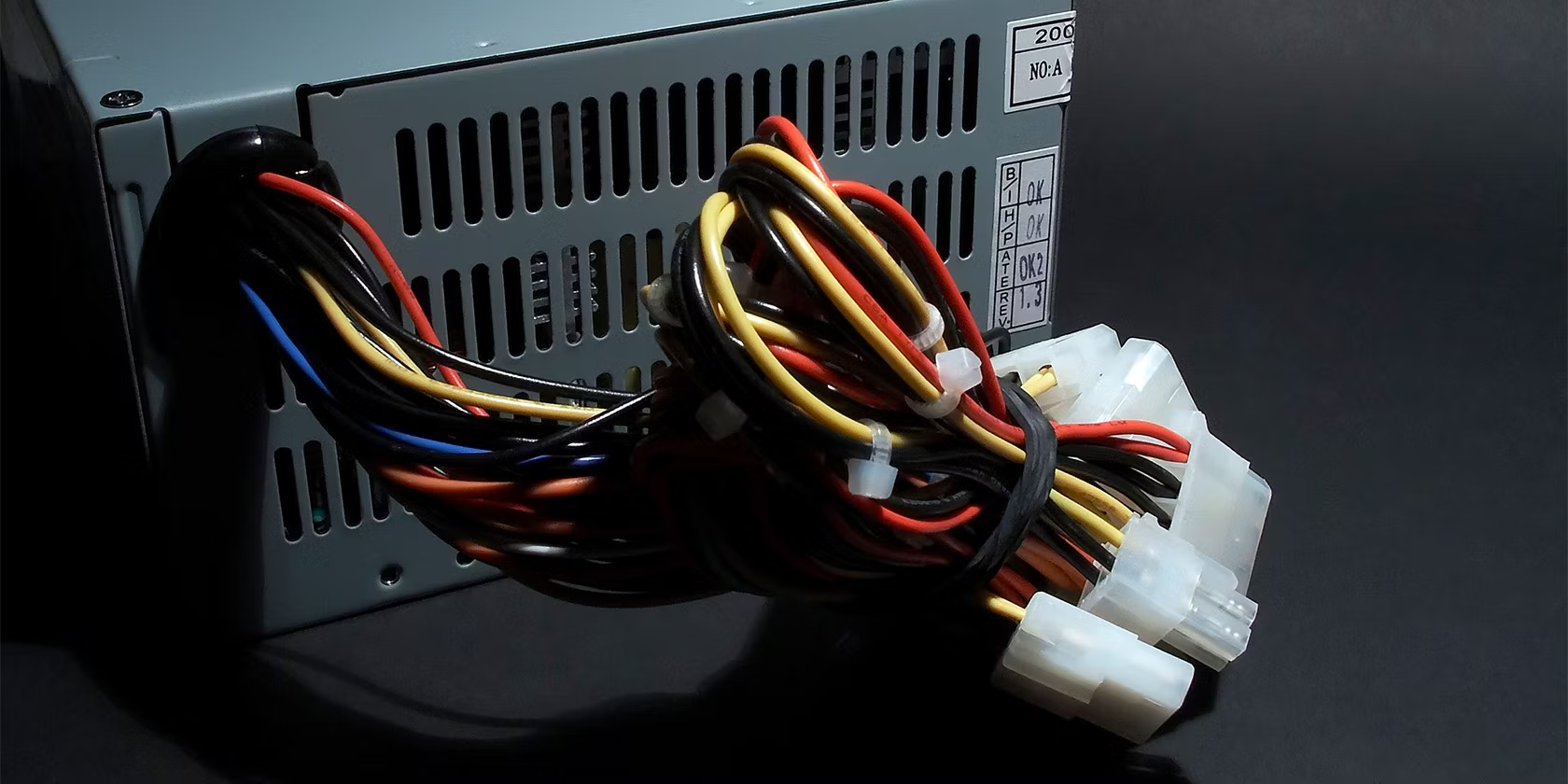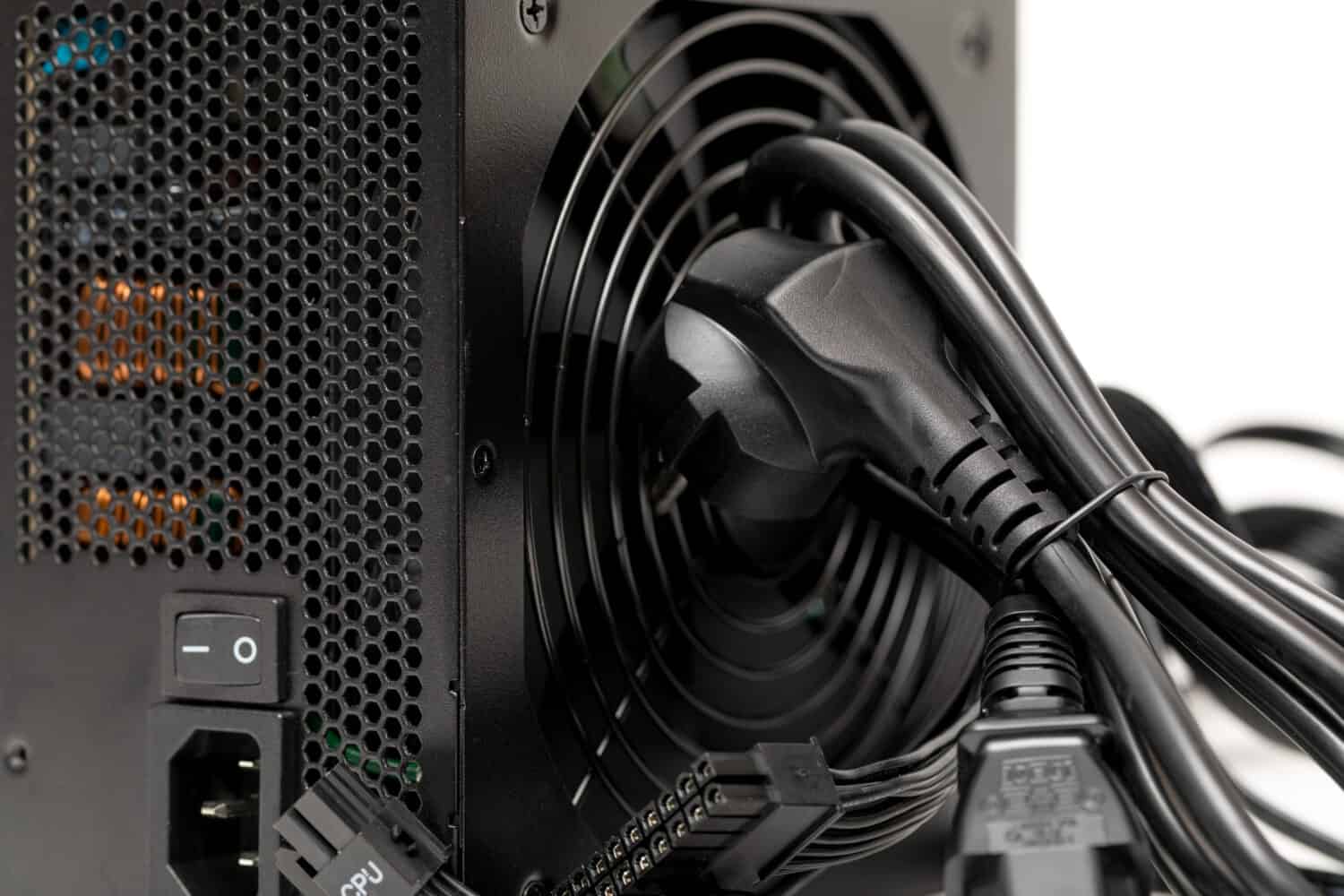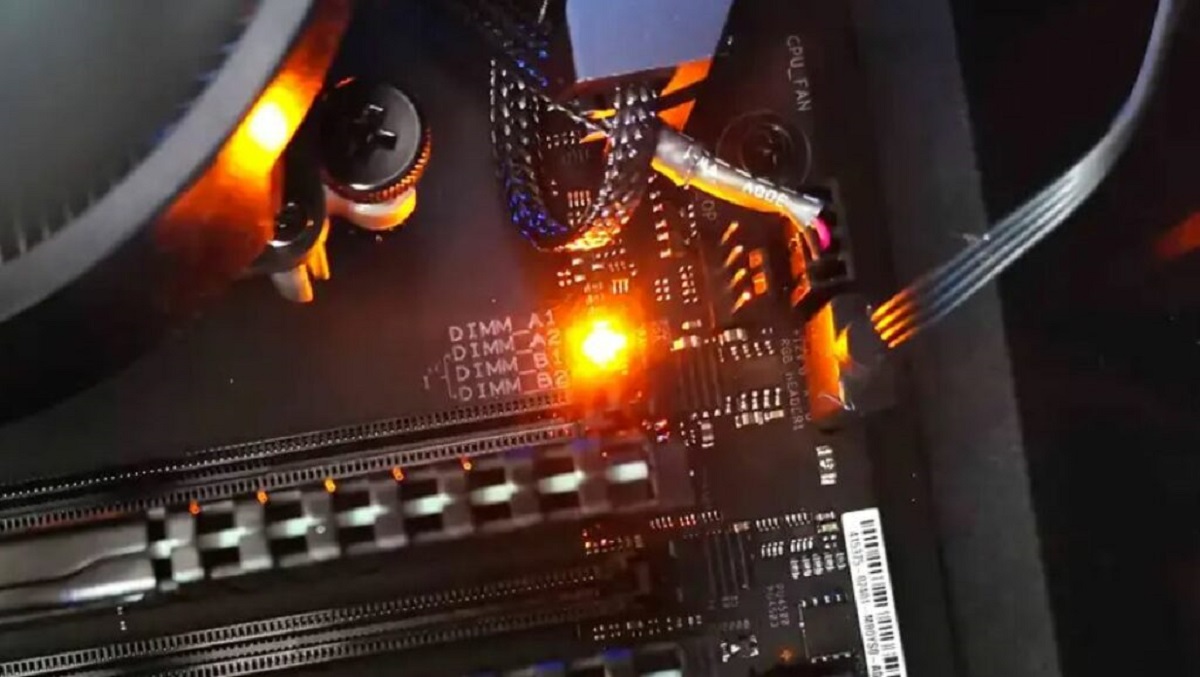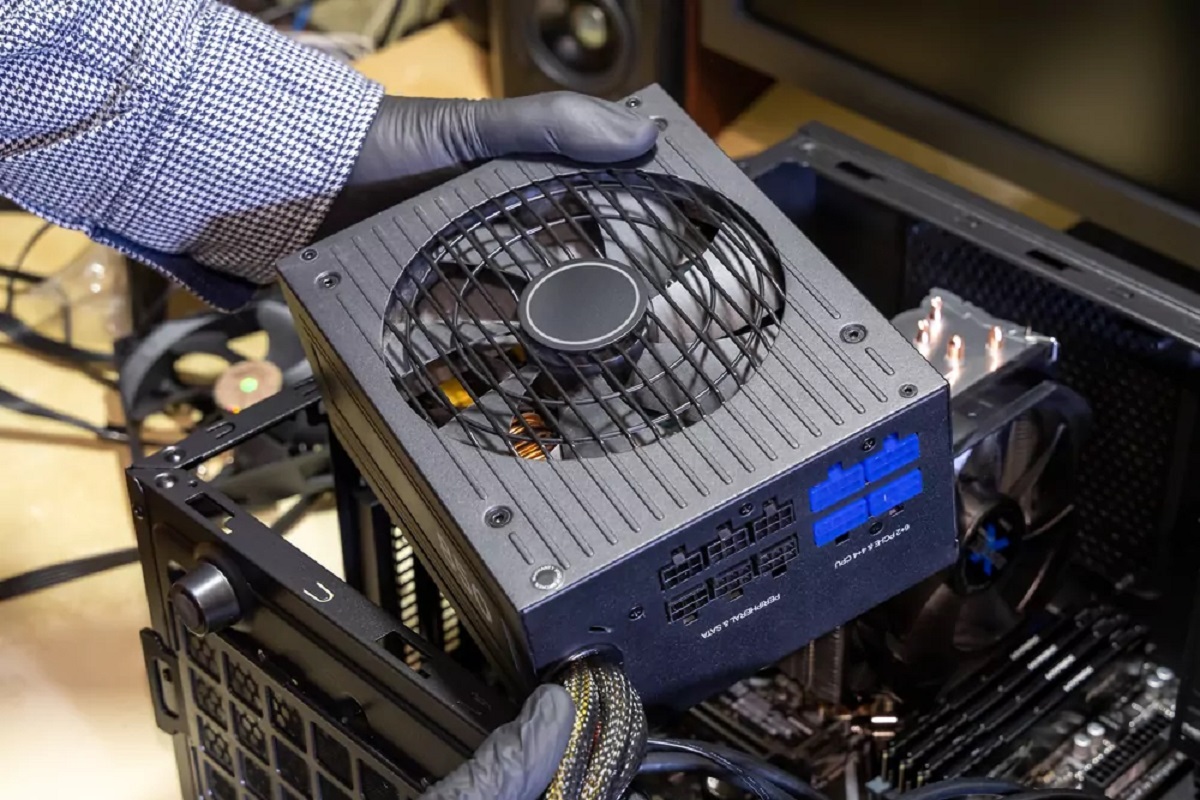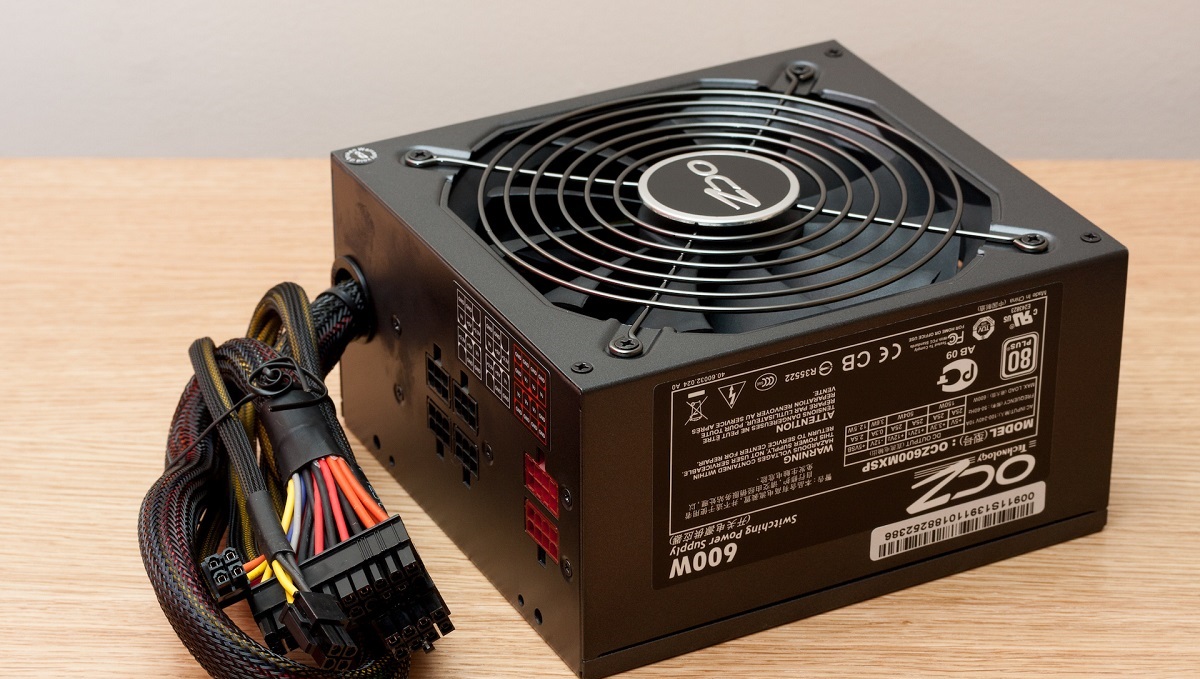Introduction
Power supply units (PSUs) are crucial components in computer systems that provide the necessary electrical power for the various hardware components to function properly. They play a vital role in ensuring the stability and reliability of a computer system. However, there are instances where PSUs can fail or even burn, leading to system failure and potential damage to other components.
In this article, we will explore the various factors that could cause a PSU to burn. Understanding these factors can help computer users identify potential issues and take preventive measures to avoid PSU failures and related complications.
It is important to note that a PSU burning is not a common occurrence, especially with high-quality and properly maintained units. However, in certain situations, PSU failures can occur due to a combination of factors, including overheating, power surges, age and wear, dust and debris accumulation, poor quality components, overloading, improper installation, system compatibility issues, and even electrical short circuits.
By understanding the potential causes of PSU burnouts, computer users can take appropriate measures to ensure the longevity and optimal performance of their systems.
Overheating
One of the primary factors that can cause a PSU to burn is overheating. PSUs generate heat during the normal operation of a computer system, and if this heat is not properly dissipated, it can lead to critical failures.
Overheating can be caused by a variety of factors, including inadequate ventilation, improper cooling solutions, or a high ambient temperature. When the PSU becomes too hot, the internal components, such as capacitors and transformers, can start to malfunction or even melt, leading to a burnt PSU.
To prevent overheating, it is essential to ensure proper airflow and ventilation within the computer case. This can be done by installing additional case fans, improving cable management to minimize obstructions, and keeping the computer in a well-ventilated area.
Furthermore, using a PSU with adequate wattage for the system’s requirements is crucial. Underpowered PSUs can be stressed and operate at higher temperatures, increasing the risk of overheating and eventual burnout.
Regular maintenance is also important in preventing PSU overheating. Periodically cleaning dust and debris from both the PSU and the computer case can significantly improve airflow and prevent heat buildup. Additionally, replacing thermal paste on the PSU’s heat sinks can help maintain efficient heat dissipation.
Lastly, monitoring system temperatures using software tools can provide early warnings if the PSU or other components are operating at unsafe temperatures. If temperatures are consistently high, it may be necessary to consider upgrading cooling solutions or investing in a higher quality and more efficient PSU.
By addressing potential overheating issues and implementing proper cooling measures, computer users can significantly reduce the risk of PSU burnouts and promote the longevity of their systems.
Power Surges
Power surges, which are sudden and brief increases in electrical voltage, can have detrimental effects on electronic devices, including PSUs. These surges can occur due to lightning strikes, faulty wiring, or power grid issues.
When a power surge happens, the excess electrical energy can overwhelm the PSU and its components, causing them to fail or burn. The most vulnerable parts of the PSU are usually the capacitors, which can become overloaded and burst under extreme voltage fluctuations.
To protect against power surges, it is crucial to use surge protectors or uninterruptible power supply (UPS) systems. Surge protectors absorb or divert excessive voltage and prevent it from reaching the connected devices. UPS systems not only provide surge protection but also offer battery backup, allowing the computer to safely shut down during an extended power outage.
It is also advisable to ensure that the electrical system in your home or office is properly grounded. This helps to divert excess voltage safely into the ground, preventing it from damaging your PSU and other devices.
Moreover, if you live in an area prone to frequent electrical storms or power fluctuations, it is advisable to unplug your computer from the power source during such events.
Regularly checking, repairing, or replacing faulty wiring in your home or office can help minimize the risk of power surges. A professional electrician can assess your electrical system and suggest appropriate measures to protect against electrical disturbances.
By taking precautionary measures to protect against power surges, you can safeguard your PSU from potential damage and ensure the smooth operation of your computer system.
Age and Wear
Like any other electronic component, PSUs have a limited lifespan and can degrade over time due to age and wear. As a PSU gets older, its internal components, such as capacitors and fans, can deteriorate, leading to potential failures and burnouts.
Factors such as the quality of the PSU, usage patterns, and environmental conditions can influence the rate of aging and wear. PSUs that are used continuously or subjected to high temperatures, dust, or humidity may wear out faster than those in well-maintained and controlled environments.
Capacitors are particularly prone to wear and failure. Over time, they can leak, bulge, or even burst. When a capacitor fails, it can cause excessive heat buildup or disrupt the flow of power, resulting in a burnt PSU.
The average lifespan of a PSU can vary depending on its quality and usage, but generally, it is recommended to consider replacing the PSU after four to five years of regular use. However, this is not a hard-and-fast rule, and it ultimately depends on individual usage and the specific PSU model.
Regularly inspecting the PSU for signs of wear, such as bulging capacitors or unusual noises from the fan, is essential. If any abnormalities are noticed, it is advisable to replace the PSU promptly to prevent potential burnouts and system failures.
When purchasing a new PSU, it is crucial to choose a reliable brand and model known for quality and durability. Investing in a higher-end PSU with a longer warranty can provide peace of mind and ensure a longer lifespan.
Additionally, maintaining a clean and dust-free computer environment can help prolong the lifespan of the PSU. Regularly cleaning the computer case and ensuring proper airflow can prevent overheating and reduce the strain on the PSU’s components.
While age and wear are inevitable factors in the lifespan of a PSU, being aware of these factors and taking proactive measures can help mitigate the risk of burnouts and ensure the longevity of your computer system.
Dust and Debris
Dust and debris accumulation can have a significant impact on the performance and lifespan of a PSU. When dust accumulates on the internal components of the PSU, it can hinder proper airflow, increase heat buildup, and potentially cause the PSU to burn.
As air circulates through the computer case, it carries along dust particles and other debris. Over time, these particles settle on the PSU’s fan, heat sinks, and other components, creating a layer of insulation that hampers heat dissipation.
When the PSU is unable to dissipate heat efficiently, its operating temperatures rise, increasing the risk of component failure or burnouts. Dust can also clog the PSU’s fan, causing it to slow down or stop functioning altogether, further compromising cooling capabilities.
To prevent dust and debris-related issues, regular cleaning of both the PSU and the computer case is essential. Using compressed air or a vacuum cleaner specifically designed for electronics, gently remove dust buildup from the PSU and other components.
It is important to exercise caution when cleaning the PSU. Avoid using excessive force on delicate components, and ensure that the computer is powered off and unplugged before starting the cleaning process.
For optimal PSU performance, it is recommended to clean the system at least every three to six months, depending on the environment. Dust filters can also be installed on the computer case’s intake fans to minimize dust accumulation and prolong the cleanliness of the PSU.
Furthermore, keeping the computer in a clean and dust-free area can prevent excessive dust from entering the system in the first place. Avoid placing the computer on the floor or in areas prone to high dust levels, such as workshops or carpeted rooms.
By regularly cleaning the PSU and maintaining a clean environment, computer users can significantly reduce the risk of PSU burnouts caused by dust and debris accumulation. This simple maintenance routine can contribute to the optimal performance and longevity of the PSU and the overall computer system.
Poor Quality Components
The quality of the components used in a PSU plays a crucial role in its reliability and longevity. PSUs manufactured with poor quality components are more prone to failures and burnouts, even under normal operating conditions.
Low-quality capacitors, transistors, and other internal components can be more susceptible to voltage fluctuations, heat buildup, and electrical stress. These components may not be able to handle the power demands of a computer system, resulting in premature failures or burnouts.
PSUs constructed with subpar materials or lacking proper insulation may also be more vulnerable to electrical shorts, which can cause sparks, overheating, or complete system shutdowns.
It is crucial to choose a PSU from a reputable manufacturer known for using high-quality components. Researching online reviews and customer feedback can provide valuable insights into the quality and reliability of different PSU models.
Additionally, certification from recognized standards organizations, such as 80 Plus for energy efficiency, can indicate a higher level of quality. PSUs that carry these certifications have undergone rigorous testing to ensure they meet specific performance and safety standards.
Investing in a high-quality PSU may be more expensive initially, but it can save money in the long run by reducing the risk of failures and the need for frequent replacements.
When building or upgrading a computer system, it is important to carefully consider the power requirements of the components being used. Choosing a PSU with adequate wattage and suitable connectors ensures that the system is not overloaded, reducing the strain on the PSU and minimizing the risk of burnouts.
Beyond component quality, it is also essential to follow best practices when connecting and using the PSU. Poor cable management, using incompatible connectors, or overloading the PSU’s output can all contribute to the degradation and eventual failure of the unit.
By selecting a PSU from a reputable manufacturer, using high-quality components, and following best practices, computer users can minimize the risk of PSU burnouts caused by poor quality components. Investing in a reliable PSU is a wise choice to protect your computer system and avoid unnecessary downtime.
Overloading
Overloading a PSU is a common cause of burnouts and failures. Overloading occurs when the power demands of the computer system exceed the capacity of the PSU, causing it to operate beyond its intended limits.
Every PSU has a maximum power output, which is expressed in terms of wattage. This rating indicates the amount of power the PSU can consistently provide without compromising its performance or risking damage to its internal components.
When a computer system is subjected to heavy usage, such as running multiple high-end graphics cards, overclocking the CPU, or running power-hungry applications, it can put a significant strain on the PSU. If the power demands exceed the PSU’s rated capacity, it can lead to overheating, voltage drops, or even complete system shutdowns.
Excessive power draw can cause the PSU’s internal components, such as capacitors and voltage regulators, to degrade or fail prematurely. When these components fail, they can produce excessive heat or create electrical shorts, resulting in burnouts and potentially damaging other hardware components.
To prevent overloading, it is crucial to select a PSU with sufficient wattage to meet the power requirements of the system. It is recommended to calculate the power needs of the individual components, taking into account any potential future upgrades, and choose a PSU with a higher wattage than the total expected power draw.
Regularly monitoring and managing the power consumption of the system can also help prevent overloading. Software tools and hardware monitoring devices can provide real-time power usage data, allowing users to optimize their system and identify any components or applications consuming excessive power.
It is important to note that while higher wattage PSUs can provide more headroom for power consumption, using a PSU significantly above the system’s requirements can be inefficient and result in wasted energy. Finding the right balance between power output and system requirements is key to avoiding overloading.
By carefully considering and selecting a PSU with adequate wattage, monitoring power usage, and avoiding excessive power draw, computer users can minimize the risk of overloading and ensure the optimal performance and longevity of their PSU.
Improper Installation
The improper installation of a PSU can lead to a variety of issues, including burnouts and failures. When installing a PSU, it is important to follow proper procedures and guidelines to ensure optimal performance and safety.
One common installation mistake is connecting the PSU to the power source while the system is still powered on. This can cause a surge of electricity, potentially damaging the PSU and other components. Always make sure to power off the system and unplug it before installing or removing the PSU.
Another installation error is using incompatible connectors or using them incorrectly. Each PSU comes with specific connectors designed for different components, such as the motherboard, graphics card, and storage drives. Plugging connectors into the wrong ports or using connectors that do not match the component’s requirements can result in improper power delivery, which can lead to burnouts or system instability.
Poor cable management is another factor that can impact the operation and lifespan of a PSU. Tangled or tightly packed cables can obstruct airflow and cause heat buildup, leading to increased stress on the PSU’s components. It is important to route cables neatly and use cable management solutions, such as cable ties or cable routing channels, to ensure proper airflow and minimize strain on the PSU.
Furthermore, not providing adequate ventilation for the PSU can also contribute to overheating and potential burnouts. The PSU should have enough clearance around it to allow for proper air circulation and heat dissipation. Installing the PSU in a small, enclosed space or with restricted airflow can lead to increased operating temperatures and decreased reliability.
When installing a PSU, it is crucial to ensure that it is securely mounted in the computer case. A loose or improperly secured PSU can cause vibrations, which can lead to internal component damage or disconnection. Use the screws or mounting brackets provided with the PSU to securely install it in the designated area of the case.
Lastly, it is important to refer to the manufacturer’s instructions and guidelines when installing a PSU. Different PSUs may have specific installation requirements or recommendations, and following these instructions ensures proper installation and minimizes the risk of failures.
By carefully following the proper installation procedures, using compatible connectors, practicing good cable management, providing adequate ventilation, and securely mounting the PSU, computer users can avoid potential burnouts and ensure the reliable operation of their PSU.
System Compatibility Issues
System compatibility issues can significantly impact the performance and stability of a PSU, potentially leading to burnouts and failures. Ensuring compatibility between the PSU and other system components is crucial to avoid such issues.
One common compatibility issue occurs when the power connectors on the PSU do not match the ports on the motherboard, graphics card, or other components. Different PSU models may offer different types and numbers of connectors, such as 20+4-pin or 8-pin connectors. It is vital to ensure that the PSU’s connectors are compatible with the corresponding ports on the components to ensure proper power delivery.
Similarly, not having a sufficient number of power connectors can cause problems. If the PSU does not provide enough connectors for all the components in the system, users may resort to using adapters or splitters, which can lead to overloaded connectors and strained power delivery. It is essential to choose a PSU that offers an adequate number of power connectors for the system’s requirements.
Another compatibility consideration is the PSU’s wattage and the power requirements of the system. Using an underpowered PSU can lead to excessive power draw and put strain on the PSU’s components, potentially resulting in burnouts. On the other hand, using an overpowered PSU can be inefficient and wasteful. It is crucial to select a PSU with the appropriate wattage to meet the system’s power demands without overload or inefficiency.
Compatibility issues can also arise with specialized hardware or unique system configurations. For example, high-performance graphics cards may require PSUs with specific power delivery capabilities, such as multiple 8-pin connectors or higher power ratings. Before purchasing a PSU, it is essential to verify that it is compatible with the specific hardware or system setup.
Consulting the PSU manufacturer’s specifications and the component’s documentation is advisable to ensure compatibility. Additionally, online resources, forums, and community support can provide insights and guidance on specific compatibility considerations for various hardware configurations.
By carefully considering system compatibility, ensuring match between connectors and ports, selecting the appropriate PSU wattage, and verifying compatibility with unique hardware requirements, computer users can minimize the risk of burnouts and failures caused by compatibility issues. Ensuring compatibility ensures a stable and reliable power supply for the system.
Electrical Short Circuit
An electrical short circuit occurs when there is an unintended connection or direct contact between two or more electrical conductors, causing an abnormal flow of electricity. Short circuits can pose a significant risk to PSUs, potentially leading to burnt components or even fires.
There are various causes of electrical short circuits, including faulty wiring, damaged cables, loose connections, or improperly installed components. When a short circuit occurs, a large amount of current flows through the conductors, generating excessive heat and potentially damaging the PSU’s internal components.
Short circuits can result in melted insulation, damaged capacitors, or even burned traces on the circuit board. When the PSU is subjected to a short circuit, it may detect the excessive current flow and shut down as a protection mechanism. However, if the short circuit persists, it can cause irreversible damage to the PSU or even other components in the system.
To prevent electrical short circuits, it is essential to ensure that the electrical system is properly wired and grounded. Faulty or damaged electrical wiring can increase the risk of short circuits. Regularly inspecting and maintaining the electrical system, or seeking the assistance of a professional electrician, can help identify and rectify any potential wiring issues.
When connecting components to the PSU, it is crucial to handle cables with care and ensure that they are correctly inserted into the appropriate connectors. Loose or improperly inserted cables can cause arcing or short circuits. It is important to double-check connections and verify that all cables are securely and correctly plugged in.
If a short circuit is suspected, it is important to power off the system immediately and unplug it from the power source. Attempting to troubleshoot a short circuit without proper knowledge or experience can be dangerous and should be avoided. Seeking professional assistance is advisable to safely identify and rectify the cause of the short circuit.
Regularly inspecting cables and connectors for signs of damage or wear can help identify and prevent short circuits. Frayed cables, exposed wires, or damaged insulation should be promptly replaced to maintain a safe and reliable electrical connection.
By paying attention to proper wiring, ensuring secure connections, and promptly addressing any potential electrical issues, computer users can minimize the risk of electrical short circuits and protect their PSU and overall system from damage.
Conclusion
Power supply unit (PSU) burnouts can be caused by a variety of factors, including overheating, power surges, age and wear, dust and debris accumulation, poor quality components, overloading, improper installation, system compatibility issues, and electrical short circuits. Understanding these factors and taking preventive measures can help computer users avoid PSU failures and the potential damage they can cause to other system components.
Overheating can lead to PSU failure, so ensuring proper ventilation, using adequate cooling solutions, and regularly cleaning dust and debris from the PSU and the computer case are essential preventative measures.
Power surges present a significant risk to PSUs. Protecting the system with surge protectors or uninterruptible power supply (UPS) systems, ensuring proper grounding, and maintaining a stable electrical system can help prevent PSU burnouts due to power surges.
Age and wear can cause internal components of PSUs to degrade over time. Regular inspection, maintenance, and replacement of PSUs are recommended to prevent failures and burnouts caused by aging components.
Dust and debris accumulation can hinder airflow and cause heat buildup, leading to PSU burnouts. Regular cleaning of the PSU and the computer case, as well as maintaining a clean environment, are crucial in preventing dust-related issues.
Poor quality components in a PSU can increase the risk of failures and burnouts. Investing in PSUs from reputable manufacturers, using high-quality components, and ensuring proper system compatibility can mitigate these risks.
Overloading a PSU by exceeding its power capacity can strain its components and lead to burnouts. Choosing a PSU with adequate wattage, monitoring power usage, and avoiding excessive power draw are important to prevent overloading.
Improper installation of a PSU can cause a range of issues, including burnouts. Following proper installation procedures, using compatible connectors, practicing good cable management, ensuring adequate ventilation, and securely mounting the PSU are vital for preventing installation-related problems.
System compatibility issues, such as mismatched connectors or insufficient wattage, can lead to PSU failures. Verifying compatibility, using appropriate connectors, and selecting a PSU with the right wattage for the system’s power requirements are key to preventing compatibility-related burnouts.
Electrical short circuits can pose a significant risk to PSUs. Ensuring proper wiring, securely connecting cables, regular inspections, and seeking professional assistance when dealing with short circuits are important preventative measures.
By understanding these factors and taking proactive steps to prevent them, computer users can minimize the risk of PSU burnouts, ensure the optimal performance and reliability of their systems, and protect their valuable hardware investments.









